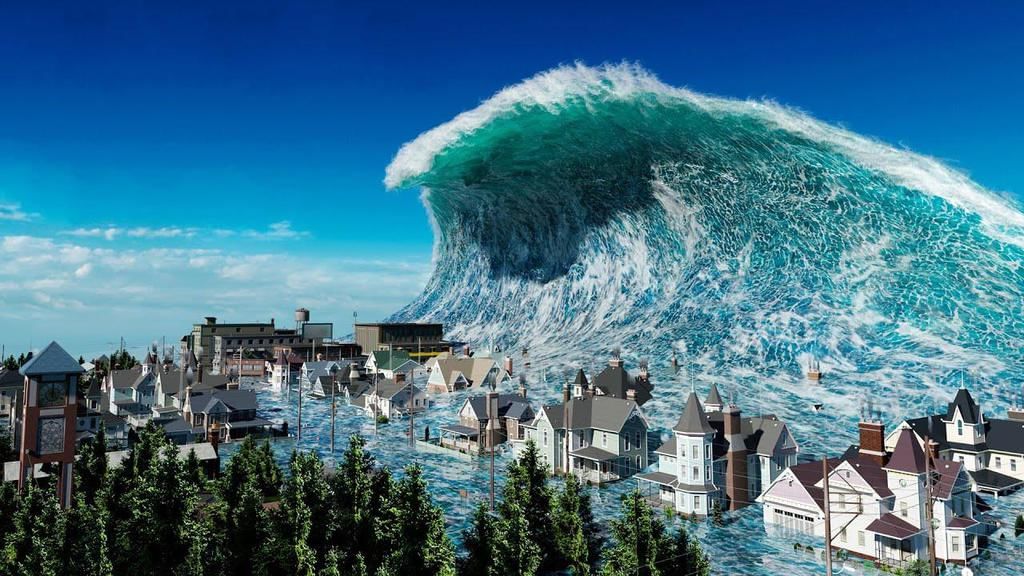All Exams >
Grade 2 >
Geography for Grade 2 >
All Questions
All questions of Natural Disasters for Grade 2 Exam
Name the natural disaster

- a)hurricane
- b)avalanche
- c)landslide
- d)earthquake
Correct answer is option 'C'. Can you explain this answer?
Name the natural disaster


a)
hurricane
b)
avalanche
c)
landslide
d)
earthquake
|
|
Avinash Patel answered |
A landslide is shown in the image above.
Negative charge of electricity and positive charge of rain meet inside the cloud and electricity is sparked- a)Tsunami
- b)Hurricane
- c)Thunderstorm
- d)Tornado
Correct answer is option 'C'. Can you explain this answer?
Negative charge of electricity and positive charge of rain meet inside the cloud and electricity is sparked
a)
Tsunami
b)
Hurricane
c)
Thunderstorm
d)
Tornado
|
|
Avinash Patel answered |
In a thunderstorm, negative charge of electricity and positive charge of rain meet inside the cloud and electricity is sparked.
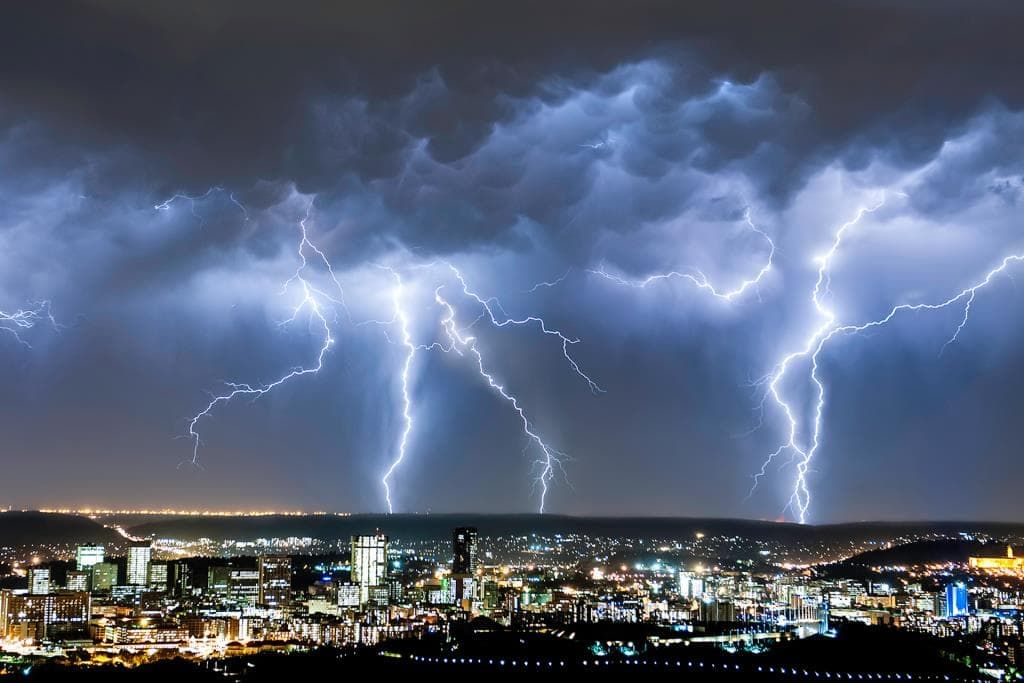
Long period of time without rain is called____________.
- a)Flood
- b)Thunderstorm
- c)Drought
- d)Wildfire
Correct answer is option 'C'. Can you explain this answer?
Long period of time without rain is called____________.
a)
Flood
b)
Thunderstorm
c)
Drought
d)
Wildfire
|
|
Aditi Sharma answered |
A drought is a long period of time during which no rain no falls.
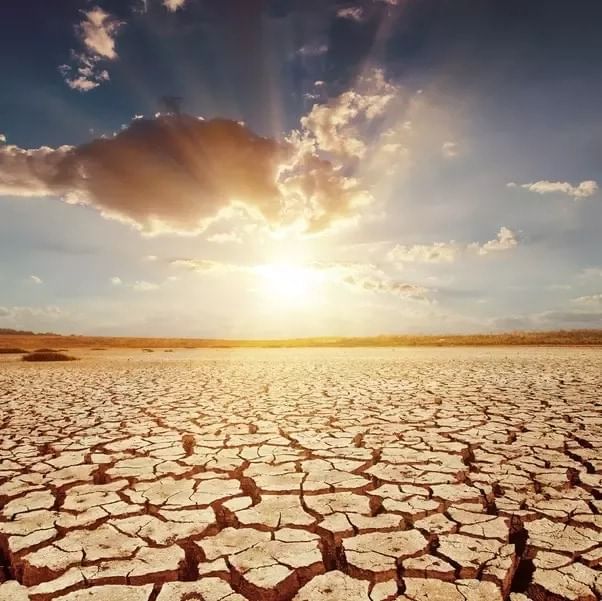
Uncontrollable fire that occurs in wild land areas- a)Volcanic Eruption
- b)Wildfire
- c)Flood
- d)Epidemic
Correct answer is option 'B'. Can you explain this answer?
Uncontrollable fire that occurs in wild land areas
a)
Volcanic Eruption
b)
Wildfire
c)
Flood
d)
Epidemic
|
|
Anand thakur answered |
Wildfire
Wildfires are uncontrollable fires that occur in wild land areas. They can spread rapidly, causing extensive damage to forests, grasslands, and other natural habitats. Here are some key points about wildfires:
- Causes: Wildfires can be caused by a variety of factors, including lightning strikes, human activities (such as campfires or arson), and natural events like volcanic eruptions.
- Spread: Wildfires can spread quickly, especially in dry and windy conditions. They can also jump across roads, rivers, and other barriers, making them difficult to contain.
- Impacts: Wildfires can have devastating effects on the environment, wildlife, and communities. They can destroy homes, businesses, and infrastructure, as well as threaten human lives.
- Prevention and Control: To prevent wildfires, it is important to follow fire safety guidelines, such as not leaving campfires unattended and obeying burn bans. Once a wildfire starts, firefighters use various techniques, such as creating firebreaks and conducting controlled burns, to try to contain and extinguish the fire.
Overall, wildfires are a natural part of many ecosystems, but they can also pose significant risks to human and environmental health. It is important to be aware of the causes and impacts of wildfires, as well as how to prevent and respond to them effectively.
Wildfires are uncontrollable fires that occur in wild land areas. They can spread rapidly, causing extensive damage to forests, grasslands, and other natural habitats. Here are some key points about wildfires:
- Causes: Wildfires can be caused by a variety of factors, including lightning strikes, human activities (such as campfires or arson), and natural events like volcanic eruptions.
- Spread: Wildfires can spread quickly, especially in dry and windy conditions. They can also jump across roads, rivers, and other barriers, making them difficult to contain.
- Impacts: Wildfires can have devastating effects on the environment, wildlife, and communities. They can destroy homes, businesses, and infrastructure, as well as threaten human lives.
- Prevention and Control: To prevent wildfires, it is important to follow fire safety guidelines, such as not leaving campfires unattended and obeying burn bans. Once a wildfire starts, firefighters use various techniques, such as creating firebreaks and conducting controlled burns, to try to contain and extinguish the fire.
Overall, wildfires are a natural part of many ecosystems, but they can also pose significant risks to human and environmental health. It is important to be aware of the causes and impacts of wildfires, as well as how to prevent and respond to them effectively.
Form above oceans with warm water- a)Flood
- b)Earthquake
- c)Hurricane
- d)Tsunami
Correct answer is option 'C'. Can you explain this answer?
Form above oceans with warm water
a)
Flood
b)
Earthquake
c)
Hurricane
d)
Tsunami
|
|
Priyanka Sharma answered |
Hurricanes form over tropical oceans, where warm water and air interact to create these storms.
Movement of rock, debris, or earth downhill- a)Landslide
- b)Volcanic Eruption
- c)Flood
- d)Avalanche
Correct answer is option 'A'. Can you explain this answer?
Movement of rock, debris, or earth downhill
a)
Landslide
b)
Volcanic Eruption
c)
Flood
d)
Avalanche
|
|
Aditi Sharma answered |
A landslide is the movement of rock, earth, or debris down a sloped section of land.
Warm, moist air mixes with cool dry air- a)Thunderstorm
- b)Tornado
- c)Tsunami
- d)Hurricane
Correct answer is option 'B'. Can you explain this answer?
Warm, moist air mixes with cool dry air
a)
Thunderstorm
b)
Tornado
c)
Tsunami
d)
Hurricane
|
|
Gargi Rane answered |
Explanation:
Thunderstorm:
When warm, moist air mixes with cool, dry air, it can create a thunderstorm. Thunderstorms are characterized by heavy rain, thunder, lightning, and sometimes hail. The rapid upward movement of warm, moist air causes the formation of cumulonimbus clouds, which are associated with thunderstorms.
Tornado:
A tornado is a rapidly rotating column of air that is in contact with both the surface of the Earth and a cumulonimbus cloud. While tornadoes can occur during thunderstorms, they are not directly caused by the mixing of warm, moist air with cool, dry air. Instead, tornadoes are typically associated with severe thunderstorms called supercells.
Tsunami:
A tsunami is a series of ocean waves caused by a sudden, large-scale disturbance in the ocean, such as an underwater earthquake, volcanic eruption, or landslide. Tsunamis are not related to the mixing of warm, moist air with cool, dry air.
Hurricane:
Hurricanes form over warm ocean waters when warm, moist air rises and cools, creating condensation and cloud formation. While hurricanes do involve the interaction of warm, moist air with cooler air, they are different from thunderstorms which occur over land.
Therefore, when warm, moist air mixes with cool, dry air, it is most likely to result in a thunderstorm.
What happens during a volcano?- a)cold and warm air mix and form storm clouds
- b)snow and ice slide down a hill
- c)dirt and soil slide down a hill
- d)magma explodes
Correct answer is option 'D'. Can you explain this answer?
What happens during a volcano?
a)
cold and warm air mix and form storm clouds
b)
snow and ice slide down a hill
c)
dirt and soil slide down a hill
d)
magma explodes
|
|
Aditi Sharma answered |
During a volcanic eruption, magma explodes onto the Earth's surface.
What is the center of a hurricane called?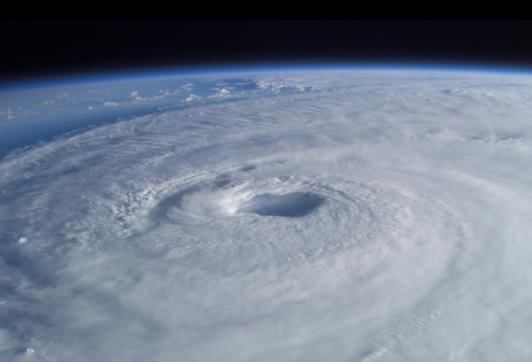
- a)The Eye
- b)The Middle
- c)The Opening
- d)The Lower
Correct answer is option 'A'. Can you explain this answer?
What is the center of a hurricane called?

a)
The Eye
b)
The Middle
c)
The Opening
d)
The Lower
|
|
Priyanka Sharma answered |
The center of a hurricane is called the eye.
What should be done during an earthquake to stay safe inside a building?- a)Stand near mirrors
- b)Use a lift
- c)Stand in a corner
- d)Use the staircase
Correct answer is option 'C'. Can you explain this answer?
What should be done during an earthquake to stay safe inside a building?
a)
Stand near mirrors
b)
Use a lift
c)
Stand in a corner
d)
Use the staircase
|
|
Edu Impact answered |
To stay safe during an earthquake while inside a building:
- Stand in a corner to minimise the risk of objects falling on you.
What happens during a hurricane?- a)warm and cold air mix and form storm clouds
- b)an earthquake happens underwater and forms huge waves
- c)rain makes the land soft and it slides down a mountain
- d)magma explodes
Correct answer is option 'A'. Can you explain this answer?
What happens during a hurricane?
a)
warm and cold air mix and form storm clouds
b)
an earthquake happens underwater and forms huge waves
c)
rain makes the land soft and it slides down a mountain
d)
magma explodes
|
|
Priyanka Sharma answered |
During a hurricane as the warm and cold air mix, the water in the air forms clouds.
Natural way for Earth to release stress- a)Tsunami
- b)Earthquake
- c)Volcanic Eruption
- d)Hurricane
Correct answer is option 'B'. Can you explain this answer?
Natural way for Earth to release stress
a)
Tsunami
b)
Earthquake
c)
Volcanic Eruption
d)
Hurricane
|
|
Anand thakur answered |
Earth's Natural Ways to Release Stress
Earthquake
Earthquakes occur when there is a sudden release of energy in the Earth's crust. This release of stress helps to relieve built-up pressure within the Earth's layers. The movement of tectonic plates causes earthquakes, and this movement helps to release stress and maintain the balance of the Earth's crust.
Tsunami
Tsunamis are large ocean waves usually caused by underwater earthquakes or volcanic eruptions. These powerful waves help to dissipate stress in the Earth's crust by redistributing energy and pressure. Tsunamis also play a role in maintaining the equilibrium of the Earth's surface.
Volcanic Eruption
Volcanic eruptions occur when magma from within the Earth's mantle rises to the surface. This release of pressure and energy helps to relieve stress within the Earth's crust. Volcanic activity is a natural way for the Earth to release built-up pressure and maintain stability.
Hurricane
Hurricanes are powerful storms that form over warm ocean waters. These storms help to release heat and energy from the Earth's atmosphere, which can contribute to stress relief for the planet. While hurricanes can be destructive, they also play a role in maintaining the Earth's climate and atmospheric balance.
Earthquake
Earthquakes occur when there is a sudden release of energy in the Earth's crust. This release of stress helps to relieve built-up pressure within the Earth's layers. The movement of tectonic plates causes earthquakes, and this movement helps to release stress and maintain the balance of the Earth's crust.
Tsunami
Tsunamis are large ocean waves usually caused by underwater earthquakes or volcanic eruptions. These powerful waves help to dissipate stress in the Earth's crust by redistributing energy and pressure. Tsunamis also play a role in maintaining the equilibrium of the Earth's surface.
Volcanic Eruption
Volcanic eruptions occur when magma from within the Earth's mantle rises to the surface. This release of pressure and energy helps to relieve stress within the Earth's crust. Volcanic activity is a natural way for the Earth to release built-up pressure and maintain stability.
Hurricane
Hurricanes are powerful storms that form over warm ocean waters. These storms help to release heat and energy from the Earth's atmosphere, which can contribute to stress relief for the planet. While hurricanes can be destructive, they also play a role in maintaining the Earth's climate and atmospheric balance.
Massive amounts of snow that slide downhill- a)Volcanic Eruption
- b)Landslide
- c)Blizzard
- d)Avalanche
Correct answer is option 'D'. Can you explain this answer?
Massive amounts of snow that slide downhill
a)
Volcanic Eruption
b)
Landslide
c)
Blizzard
d)
Avalanche
|
|
Aditi Sharma answered |
An avalanche is a mass of snow that slides downhill.

Snowstorms with high winds, low temperatures, and driving snow.- a)Earthquake
- b)Blizzard
- c)Tsunami
- d)Avalanche
Correct answer is option 'B'. Can you explain this answer?
Snowstorms with high winds, low temperatures, and driving snow.
a)
Earthquake
b)
Blizzard
c)
Tsunami
d)
Avalanche
|
|
Aditi Sharma answered |
Low temperatures, strong winds, and large amounts of snow together create blizzards.
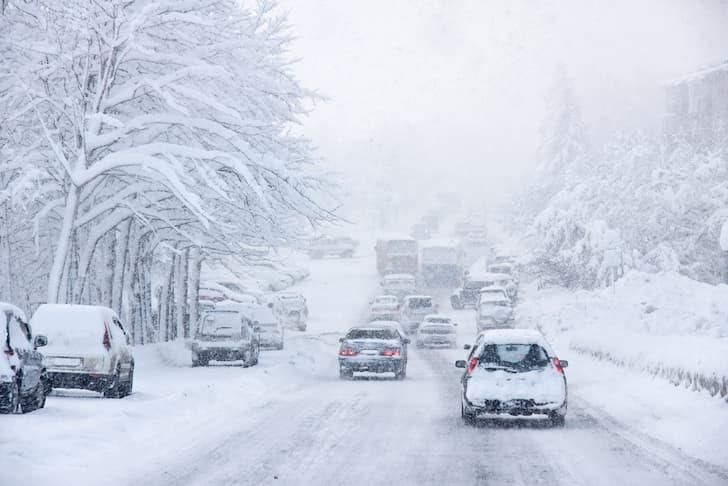
What can be a consequence of a flood?- a) Damage to infrastructure and crops
- b) Improved drinking water supply
- c) Increased agricultural yield
- d) Stabilization of ecosystems
Correct answer is option 'A'. Can you explain this answer?
What can be a consequence of a flood?
a)
Damage to infrastructure and crops
b)
Improved drinking water supply
c)
Increased agricultural yield
d)
Stabilization of ecosystems

|
Bespoke Classes answered |
Floods can cause extensive damage to infrastructure such as buildings and roads, as well as destroy crops, leading to food shortages. Floodwaters can also carry contaminants, making clean drinking water scarce and increasing the risk of waterborne diseases.
What is a common effect of volcanic eruptions?- a) Release of lava and poisonous gases
- b) Stabilization of the environment
- c) Increased agricultural productivity
- d) Creation of new habitats
Correct answer is option 'A'. Can you explain this answer?
What is a common effect of volcanic eruptions?
a)
Release of lava and poisonous gases
b)
Stabilization of the environment
c)
Increased agricultural productivity
d)
Creation of new habitats

|
Bespoke Classes answered |
Volcanic eruptions often release lava and poisonous gases, which can destroy everything in their path and pose serious health risks to living beings. Understanding these effects is important for communities near active volcanoes to prepare for potential eruptions.
What is the primary cause of cyclones?- a) Earthquakes
- b) Cold air masses
- c) Drought conditions
- d) Warm seas and oceans
Correct answer is option 'D'. Can you explain this answer?
What is the primary cause of cyclones?
a)
Earthquakes
b)
Cold air masses
c)
Drought conditions
d)
Warm seas and oceans

|
Bespoke Classes answered |
Cyclones primarily form over warm seas and oceans, where rising warm air creates low pressure that leads to the development of strong windstorms. Understanding the conditions that lead to cyclones can improve preparedness for such events.
Which of the following is a precaution to take during an earthquake?- a) Stand near large furniture
- b) Go to an open area away from buildings
- c) Stay in bed without protection
- d) Use elevators to escape
Correct answer is option 'B'. Can you explain this answer?
Which of the following is a precaution to take during an earthquake?
a)
Stand near large furniture
b)
Go to an open area away from buildings
c)
Stay in bed without protection
d)
Use elevators to escape

|
Bespoke Classes answered |
During an earthquake, it is safest to go to an open area away from buildings to avoid falling debris. This precaution helps protect individuals from injury and increases their chances of staying safe until the tremors stop.
How can one stay safe during a cyclone?- a) Drive through the storm
- b) Keep an emergency kit ready
- c) Stay indoors without preparations
- d) Ignore weather updates
Correct answer is option 'B'. Can you explain this answer?
How can one stay safe during a cyclone?
a)
Drive through the storm
b)
Keep an emergency kit ready
c)
Stay indoors without preparations
d)
Ignore weather updates

|
Bespoke Classes answered |
Keeping an emergency kit ready, which includes food, water, and medical supplies, is essential for safety during a cyclone. Staying informed with weather updates helps individuals make timely decisions to protect themselves and their families.
Which of the following is NOT considered a natural disaster?- a) Flood
- b) Nuclear explosion
- c) Cyclone
- d) Earthquake
Correct answer is option 'B'. Can you explain this answer?
Which of the following is NOT considered a natural disaster?
a)
Flood
b)
Nuclear explosion
c)
Cyclone
d)
Earthquake

|
Bespoke Classes answered |
A nuclear explosion is a man-made disaster, whereas earthquakes, floods, and cyclones are natural disasters caused by natural forces. Understanding the difference is crucial for disaster preparedness and response.
What is a natural disaster?- a) An event that causes harm to life and property due to natural forces
- b) An event caused by human activity
- c) A minor weather change
- d) An event that only affects animals
Correct answer is option 'A'. Can you explain this answer?
What is a natural disaster?
a)
An event that causes harm to life and property due to natural forces
b)
An event caused by human activity
c)
A minor weather change
d)
An event that only affects animals

|
Bespoke Classes answered |
A natural disaster is defined as an event that occurs due to natural forces and results in significant harm to life and property, such as earthquakes, floods, and cyclones. These events can lead to destruction and pose serious risks to communities and ecosystems.
What is the purpose of building bunds in regions prone to floods?- a) To create recreational areas
- b) To hold back water and reduce flooding
- c) To promote agriculture
- d) To enhance visibility
Correct answer is option 'B'. Can you explain this answer?
What is the purpose of building bunds in regions prone to floods?
a)
To create recreational areas
b)
To hold back water and reduce flooding
c)
To promote agriculture
d)
To enhance visibility

|
Bespoke Classes answered |
Building bunds helps to hold back water and reduce flooding in vulnerable areas by creating barriers. This engineering solution is important for protecting communities from flood damage and managing water flow effectively during heavy rains.
What is one way to help those affected by natural disasters?- a) Create more disasters
- b) Criticize their preparedness
- c) Ignore their situation
- d) Provide emotional and monetary support
Correct answer is option 'D'. Can you explain this answer?
What is one way to help those affected by natural disasters?
a)
Create more disasters
b)
Criticize their preparedness
c)
Ignore their situation
d)
Provide emotional and monetary support

|
Bespoke Classes answered |
Providing emotional and monetary support is crucial for helping individuals affected by natural disasters. Relief efforts can include donations to organizations that assist with recovery and rebuilding, highlighting the importance of community solidarity in times of crisis.
What is the term used for the study of earthquakes?- a) Meteorology
- b) Volcanology
- c) Oceanography
- d) Seismology
Correct answer is option 'D'. Can you explain this answer?
What is the term used for the study of earthquakes?
a)
Meteorology
b)
Volcanology
c)
Oceanography
d)
Seismology

|
Bespoke Classes answered |
The study of earthquakes is known as seismology. Seismologists analyze seismic waves to understand earthquake patterns and improve safety measures for communities at risk from earthquakes.
Name the natural disaster
- a)Avalanche
- b)Landslide
- c)Hurricane
- d)Tsunami
Correct answer is option 'A'. Can you explain this answer?
Name the natural disaster

a)
Avalanche
b)
Landslide
c)
Hurricane
d)
Tsunami
|
|
Priyanka Sharma answered |
An avalanche is shown in the image above.
Name this natural disaster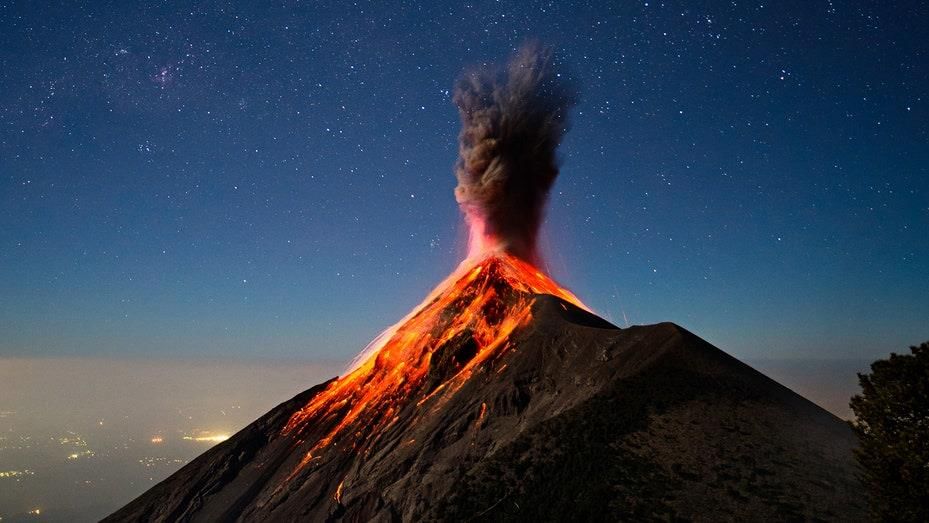
- a)Tsunami
- b)Landslide
- c)Wildfire
- d)Volcano
Correct answer is option 'D'. Can you explain this answer?
Name this natural disaster

a)
Tsunami
b)
Landslide
c)
Wildfire
d)
Volcano
|
|
Aditi Sharma answered |
A volcano is shown in the image above.
Name the natural disaster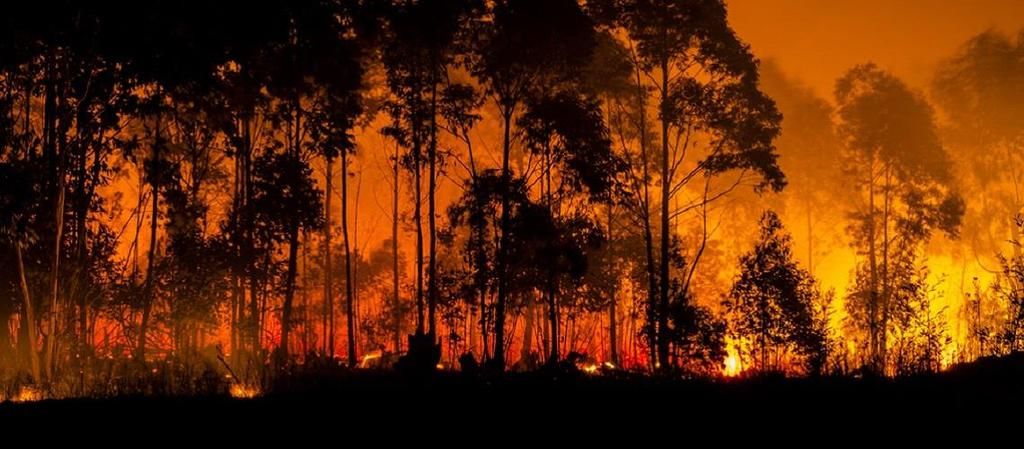
- a)Landslide
- b)Wildfire
- c)Tsunami
- d)Hurricane
Correct answer is option 'B'. Can you explain this answer?
Name the natural disaster

a)
Landslide
b)
Wildfire
c)
Tsunami
d)
Hurricane
|
|
Aditi Sharma answered |
A wildfire is shown in the image above.
What is a drought characterized by?- a) Excessive rainfall
- b) High humidity levels
- c) Shortage of clean water and food
- d) Frequent thunderstorms
Correct answer is option 'C'. Can you explain this answer?
What is a drought characterized by?
a)
Excessive rainfall
b)
High humidity levels
c)
Shortage of clean water and food
d)
Frequent thunderstorms

|
Bespoke Classes answered |
A drought is characterized by extended periods of low rainfall, leading to water shortages. This can result in crop failures and food scarcity, affecting both people and livestock. Awareness of drought conditions can help in water conservation efforts.
Which type of disaster is characterized by the sudden shaking of the ground?- a) Earthquake
- b) Cyclone
- c) Volcanic eruption
- d) Flood
Correct answer is option 'A'. Can you explain this answer?
Which type of disaster is characterized by the sudden shaking of the ground?
a)
Earthquake
b)
Cyclone
c)
Volcanic eruption
d)
Flood

|
Bespoke Classes answered |
An earthquake is characterized by the sudden shaking of the ground, caused by the movement of tectonic plates beneath the Earth's surface. Understanding this phenomenon helps communities prepare for potential earthquakes and reduce risks.
What should you do if you receive a flood warning?- a) Gather friends for a picnic
- b) Continue with regular activities
- c) Ignore it
- d) Move to a higher area immediately
Correct answer is option 'D'. Can you explain this answer?
What should you do if you receive a flood warning?
a)
Gather friends for a picnic
b)
Continue with regular activities
c)
Ignore it
d)
Move to a higher area immediately

|
Bespoke Classes answered |
If a flood warning is issued, it is crucial to move to a higher area immediately to avoid being trapped by rising waters. Being proactive can save lives and reduce the risk of injury during flooding events.
Why is it important to listen to weather updates during a cyclone?- a) To plan a vacation
- b) To follow social media trends
- c) To ignore safety measures
- d) To stay informed and make safe decisions
Correct answer is option 'D'. Can you explain this answer?
Why is it important to listen to weather updates during a cyclone?
a)
To plan a vacation
b)
To follow social media trends
c)
To ignore safety measures
d)
To stay informed and make safe decisions

|
Bespoke Classes answered |
Listening to weather updates during a cyclone is vital for staying informed about the storm's progress and any safety instructions. This information enables individuals to make timely and safe decisions to protect themselves and their families.
Which of the following is a sign that a volcanic eruption may occur?- a) Stable weather patterns
- b) Increased earthquake frequency
- c) Decreased seismic activity
- d) Lower temperatures
Correct answer is option 'B'. Can you explain this answer?
Which of the following is a sign that a volcanic eruption may occur?
a)
Stable weather patterns
b)
Increased earthquake frequency
c)
Decreased seismic activity
d)
Lower temperatures

|
Bespoke Classes answered |
Increased earthquake frequency can indicate that a volcanic eruption may be imminent, as these seismic activities often signify movement of magma beneath the Earth's surface. Monitoring seismic activity is crucial for early warning systems.
What can contribute to the risk of landslides?- a) Urban development
- b) Increased vegetation
- c) Heavy rain and earthquakes
- d) Calm weather conditions
Correct answer is option 'C'. Can you explain this answer?
What can contribute to the risk of landslides?
a)
Urban development
b)
Increased vegetation
c)
Heavy rain and earthquakes
d)
Calm weather conditions

|
Bespoke Classes answered |
Landslides are often triggered by heavy rainfall and earthquakes, which can weaken the ground and cause soil, rock, and mud to slide down slopes. Monitoring weather conditions and understanding terrain can help mitigate landslide risks.
What is an effective way to prepare for a drought?- a) Collect rainwater
- b) Ignore weather forecasts
- c) Increase water usage
- d) Store excess food
Correct answer is option 'A'. Can you explain this answer?
What is an effective way to prepare for a drought?
a)
Collect rainwater
b)
Ignore weather forecasts
c)
Increase water usage
d)
Store excess food

|
Bespoke Classes answered |
Collecting rainwater is an effective strategy to prepare for a drought, as it provides a supplementary water source during dry periods. Implementing water conservation practices helps communities manage resources more effectively.
What role do disaster management teams play during natural disasters?- a) They focus solely on recovery efforts
- b) They create disasters
- c) They provide quick help and rescue
- d) They observe without intervening
Correct answer is option 'C'. Can you explain this answer?
What role do disaster management teams play during natural disasters?
a)
They focus solely on recovery efforts
b)
They create disasters
c)
They provide quick help and rescue
d)
They observe without intervening

|
Bespoke Classes answered |
Disaster management teams play a crucial role in providing quick assistance and rescue operations during natural disasters, helping to save lives and mitigate damage. Their preparedness and coordination are essential for effective emergency response.
What is this natural disaster?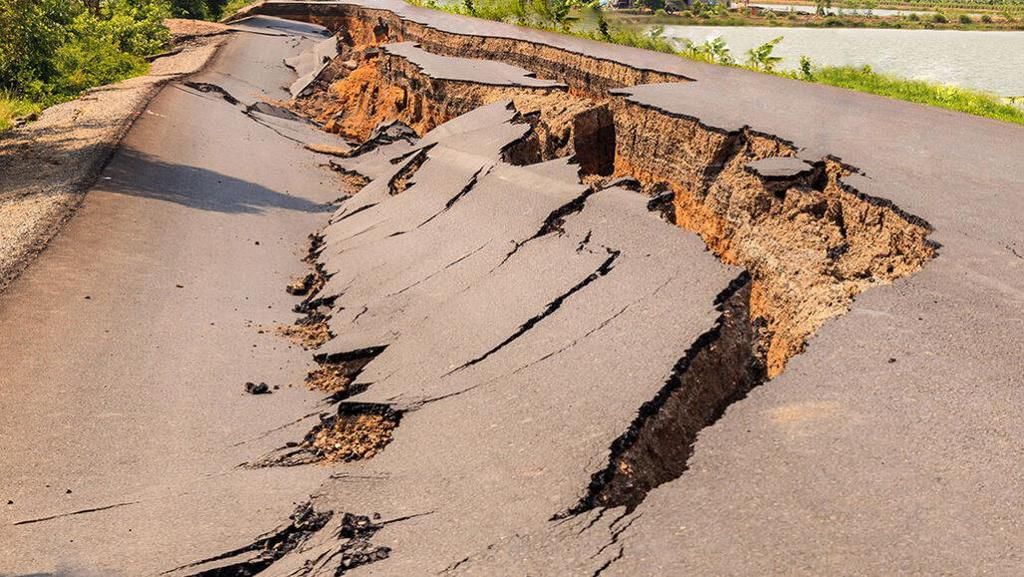
- a)Avalanche
- b)Earthquake
- c)Landslide
- d)Huricane
Correct answer is option 'B'. Can you explain this answer?
What is this natural disaster?

a)
Avalanche
b)
Earthquake
c)
Landslide
d)
Huricane
|
|
Priyanka Sharma answered |
An earthquake is shown in the image above.
Name the natural disaster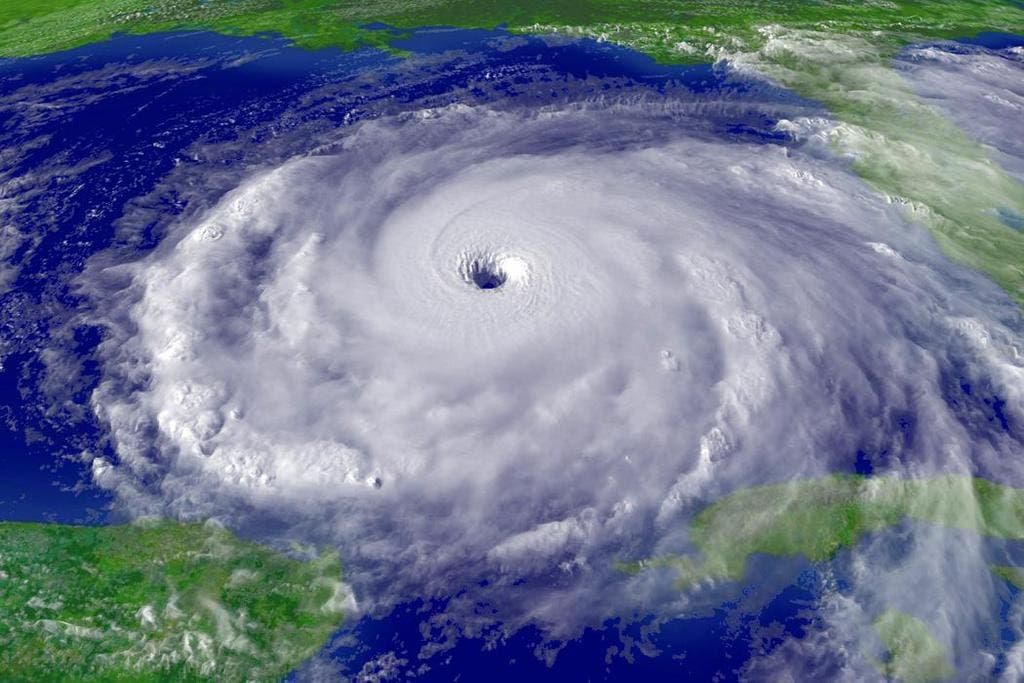
- a)hurricane
- b)Tsunami
- c)Avalanche
- d)Landslide
Correct answer is option 'A'. Can you explain this answer?
Name the natural disaster

a)
hurricane
b)
Tsunami
c)
Avalanche
d)
Landslide
|
|
Priyanka Sharma answered |
A hurricane is shown in the image above.
What should you do if you are indoors during an earthquake?- a) Stand in a doorway
- b) Run to the nearest exit
- c) Get under a sturdy table and protect your head
- d) Go outside immediately
Correct answer is option 'C'. Can you explain this answer?
What should you do if you are indoors during an earthquake?
a)
Stand in a doorway
b)
Run to the nearest exit
c)
Get under a sturdy table and protect your head
d)
Go outside immediately

|
Bespoke Classes answered |
The safest action during an earthquake is to get under a sturdy table and protect your head. This minimizes the risk of injury from falling debris. Staying indoors can often be safer than rushing outside, where falling objects may pose a danger.
What type of natural disaster can cause crops to fail due to prolonged lack of rain?- a) Cyclone
- b) Earthquake
- c) Drought
- d) Flood
Correct answer is option 'C'. Can you explain this answer?
What type of natural disaster can cause crops to fail due to prolonged lack of rain?
a)
Cyclone
b)
Earthquake
c)
Drought
d)
Flood

|
Bespoke Classes answered |
A drought is a prolonged period of dry weather that can lead to crop failure due to insufficient rainfall. This has significant impacts on food availability and water supply, making it essential to monitor weather patterns and implement water-saving strategies.
Chapter doubts & questions for Natural Disasters - Geography for Grade 2 2025 is part of Grade 2 exam preparation. The chapters have been prepared according to the Grade 2 exam syllabus. The Chapter doubts & questions, notes, tests & MCQs are made for Grade 2 2025 Exam. Find important definitions, questions, notes, meanings, examples, exercises, MCQs and online tests here.
Chapter doubts & questions of Natural Disasters - Geography for Grade 2 in English & Hindi are available as part of Grade 2 exam.
Download more important topics, notes, lectures and mock test series for Grade 2 Exam by signing up for free.
Geography for Grade 2
46 docs|11 tests
|

Contact Support
Our team is online on weekdays between 10 AM - 7 PM
Typical reply within 3 hours
|
Free Exam Preparation
at your Fingertips!
Access Free Study Material - Test Series, Structured Courses, Free Videos & Study Notes and Prepare for Your Exam With Ease

 Join the 10M+ students on EduRev
Join the 10M+ students on EduRev
|

|
Create your account for free
OR
Forgot Password
OR
Signup on EduRev and stay on top of your study goals
10M+ students crushing their study goals daily

